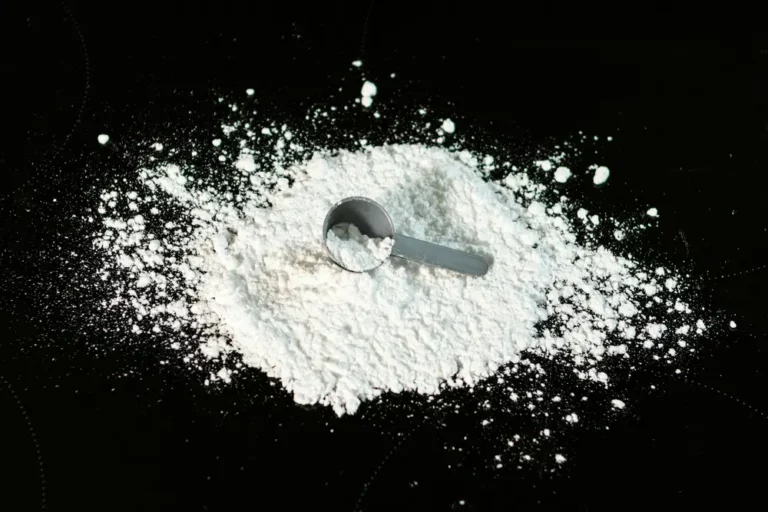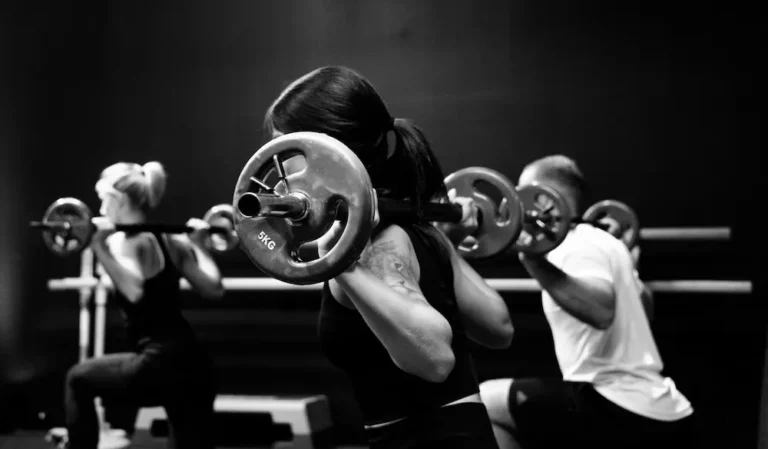Safe Weightlifting: Timing After Wisdom Teeth Removal
After getting my wisdom teeth pulled, I was itching to get back to my workout routine. But I knew jumping straight into heavy lifting might not be the best idea. According to the Cleveland Clinic, exerting yourself through heavy lifting can spike your blood pressure and increase bleeding risks. So, I had to ask myself, “When can I safely lift weights after wisdom teeth removal?”
Navigating the recovery period was tricky, especially with the added challenge of managing pain and sticking to a soft food diet. It made me realize the importance of taking it easy and focusing on low-impact exercises to aid my healing. Let’s dive into what I learned about the right time to resume weightlifting and how to keep active without risking my recovery.
What Is the Recovery Process Post-Wisdom Teeth Removal?
When it comes to getting back to the gym and lifting weights after having my wisdom teeth removed, I realized early on that understanding the recovery process is key. It’s not just about the immediate aftermath but also how my body heals and adapts over time. Let’s break this down into two major parts to get a better grasp on what to expect.
Typical Healing Timeline
First off, it’s crucial to know the typical healing timeline. Following the extraction, the initial few days are the most critical for healing. Lower wisdom teeth, in particular, have a longer recovery period, often requiring up to two weeks for substantial healing. During the first 24 hours, activities should be minimal to prevent any disturbance to the clotting process. The fascinating part is how the body heals from the inside out; the hole left by the extraction fills up gradually, a process that can stretch over 4 to 6 weeks.
By the third or fourth day post-surgery, I should start seeing steady improvement. However, it’s not a linear process. Depending on the surgery’s extent, it might take a bit longer. It’s important to keep an eye out for any signs of complication, such as increased swelling, fever, or pain, which could indicate an infection or other healing issues.
Factors Affecting Recovery
Onto the factors affecting recovery. It’s fascinating how varied the healing process can be from person to person. Several key elements play into this, such as age, overall health, and the efficiency of one’s immune system. A younger person with a robust immune system may recover quicker than someone older or with underlying health conditions.
The type of extraction I’ve undergone also influences the recovery timeline. A simple extraction might have me back to lifting weights sooner than if I had a more complicated surgery. Additionally, how well I follow post-operative care instructions, such as keeping the area clean and avoiding certain foods or activities, can significantly affect my healing process.
Immediate Post-Operative Considerations
After having my wisdom teeth removed, the next big question on my mind was, “When can I hit the gym again?” Before diving back into any weightlifting routine, there are some critical immediate post-operative considerations to keep in mind. These guidelines helped me navigate the initial recovery phase, ensuring I didn’t set back my healing process by lifting weights too soon.
Initial 24-48 Hours After Surgery
The first day after surgery is crucial for recovery. I made sure to take it easy and give my body the rest it needed. Engaging in any strenuous activities, including lifting weights, was off the table. Instead, I focused on low-impact activities like gentle walking, which doesn’t exert pressure on the surgical sites. It’s essential to listen to your body during this period; any signs of discomfort or pain are signals to stop and rest. Staying hydrated and eating soft foods also played a big part in my recovery during the initial 24-48 hours.
Common Post-Surgical Symptoms
Dealing with the common post-surgical symptoms was a bit of a challenge, but knowing what to expect made it easier. Swelling and pain were my companions for the first few days, managed by the prescribed painkillers and ice packs. I also experienced some bruising around my cheeks, which is a natural response to the surgery. To combat the risk of infection, I meticulously followed my dentist’s wound care instructions, which included rinsing with saline solution and avoiding any poking or prodding at the extraction site. Recognizing these symptoms as part of the healing process helped me stay patient and avoid rushing back into my weightlifting routine.
Guidelines for Resuming Physical Activity
After having my wisdom teeth pulled out, I was eager to get back into my regular workout routine. However, I knew it was crucial to heed professional advice on when and how to safely do so to avoid any complications. Here, I’m sharing what I’ve learned about navigating the journey back to physical activity.
Initial Days Following Surgery
In the immediate aftermath of surgery, it’s paramount to allow the body to initiate the healing process undisturbed. This means taking it really easy, especially in the first 24 hours. My surgeon was pretty clear about the risks associated with premature physical exertion, such as bleeding, swelling, and the dreaded dry socket. Based on what I’ve gathered, here’s a brief timeline to give you an idea of what to expect:
| Post-Surgery Day | Activity Level |
|---|---|
| 1-2 | Rest, no physical activity |
| 3 | Light walks, gentle stretches |
| 5 | Light weights, avoiding strain |
Following these guidelines, I found it pivotal to listen to my body. Any sign of discomfort or pain was a clear indicator to pause and reassess my readiness for physical activity.
Gradual Resumption of Activity
Once past the initial days, I found maneuvering back into my exercise routine to require a slow and cautious approach. I started with activities that had minimal impact and gradually introduced more strenuous exercises over time. It’s essential to avoid actions that directly strain the area of extraction, like heavy lifting or any exercise that involves vigorous jaw movement.
For less complicated extractions, I learned it was generally safe to ease into light exercise like yoga or stretching after a couple of days, always keeping an eye out for any adverse reactions. For more involved procedures, it could take significantly longer. Here’s what I learned about escalation:
- Day 5 onwards: Resume more substantial weights, but be vigilant about any form of jaw clenching.
- Week 2: Evaluate comfort and safety for resuming near-normal routines, avoiding maximum exertion.
- Weeks 5-7: For major surgeries, it’s recommended to wait up to this period before engaging in any strenuous activities to ensure full healing.
It turned out that the key was to maintain open communication with my healthcare provider, regularly updating them on my progress and getting their green light before advancing my physical activities. This personalized guidance helped me navigate my recovery with confidence, avoiding setbacks and ensuring a smooth, complication-free healing process.
Risks of Lifting Weights Too Soon
Risk of Dry Socket and Other Complications
After getting my wisdom teeth removed, I was eager to get back to my workout routine, but I learned that jumping back into lifting weights too soon might lead to several complications, most notably dry sockets. This condition is not just painful; it can significantly delay healing. When the blood clot that’s supposed to protect the extraction site gets dislodged or doesn’t form properly, the exposed nerves and bone result in severe pain and a higher risk of infection. A dry socket is a risk I definitely wanted to avoid.
Moreover, lifting heavy weights too soon can cause bleeding or re-opening of the wound, especially in cases where the surgery is complex. Intense physical exertion increases blood pressure, which in turn can lead to more bleeding at the extraction site. This not only prolongs the recovery process but may also necessitate a return trip to the oral surgeon or dentist.
Signs of Overexertion
I quickly realized that listening to my body was crucial during recovery. Some signs that I was pushing it too hard included pain, swelling, dizziness, and spotting or increased bleeding at the extraction sites. These symptoms indicated that my body hadn’t fully healed and needed more rest.
Feeling lightheaded during a workout was a clear sign that I needed to stop immediately. Exercising with intensity could cause sutures to come apart or increase swelling, making recovery longer and more uncomfortable. Paying attention to these signals allowed me to adjust my activities to ensure I wasn’t hindering my recovery.
Safe Exercise Practices Post-Surgery
After getting my wisdom teeth removed, I learned firsthand that easing back into my normal workout routine wasn’t going to be as simple as I initially thought. But with a bit of patience and the right approach, I found ways to stay active without risking my recovery. Let’s dive into some safe exercise practices I discovered and followed post-surgery.
Recommended Light Exercises
Right off the bat, I knew I had to be careful about the exercises I chose after my wisdom teeth removal. The goal was to keep moving without causing any harm to the healing process. Here are a few gentle activities I found beneficial:
- Walking: This was my go-to. It’s low-impact, and I could easily control the pace.
- Stretching: I focused on gentle stretching routines to stay limber without straining my body.
- Yoga: Opting for more restorative or gentle yoga classes helped me maintain flexibility.
- Pilates: I stuck with light Pilates exercises, emphasizing slow movements and core strength.
- Light strength training: I used very light weights and avoided any exercises that involved clenching my jaw or jolting movements.
Following these light exercises not only helped me stay active but also played a role in my recovery process. The key was listening to my body and stopping immediately if I felt any discomfort.
Modifications to Weightlifting Routine
When it came to weightlifting, I faced a bigger challenge. I had to modify my routine substantially to avoid any complications like dry sockets or wound reopening. Here’s how I adjusted:
- Lighter Weights: I significantly reduced the weight I would normally lift. Starting with weights that were more than manageable helped me maintain some muscle activity without overexertion.
- Avoid Heavy Lifting: For the initial period post-surgery, I avoided heavy lifting entirely. Instead, I focused on bodyweight exercises or using resistance bands for light resistance training.
- Focus on Form: More than ever, I paid close attention to my form, ensuring I wasn’t putting unnecessary strain on my body or inadvertently clenching my jaw during exercises.
- Increased Rest: I increased the rest periods between sets to ensure I wasn’t pushing myself too hard too soon.
By adapting my weightlifting routine, I was able to gradually reintroduce more strenuous activities into my workout regime safely. It was crucial for me to remember that healing fully before ramping up the intensity was key to avoiding setbacks.
Professional Recommendations and Consultations
Heeding the advice of medical professionals was not just about playing it safe but ensuring my recovery was on track and devoid of unnecessary setbacks.
Following Surgeon’s Guidelines
My surgeon laid out a clear path for recovery, emphasizing the need to wait a minimum of 3-5 days before engaging in light exercise and 5-7 days before attempting more strenuous activities. This advice isn’t arbitrary; it’s rooted in understanding how the body heals after such an invasive procedure. The risk of dislodging the blood clot, leading to a painful condition known as dry socket, was something I wasn’t eager to experience.
I learned that recovery times could vary depending on the complexity of the extraction. For a straightforward removal, easing back into a normal routine might come sooner, but a complicated procedure requiring significant tissue manipulation or resulting in considerable blood loss could extend the hiatus from the gym.
When to Seek Medical Advice
Despite our best efforts to follow post-surgery instructions, unexpected symptoms can arise, signaling the need for professional intervention. In my case, spotting the warning signs early and responding promptly was crucial. Increased bleeding, swelling, fever, or the eruption of pain beyond the typical recovery discomfort necessitated a call to the dentist.
Here are a few instances when seeking medical advice is indispensable:
- Significant Discomfort or Pain: If exercise leads to pronounced discomfort or pain around the extraction site, it’s a clear indication to pause and consult a dentist. Minor pain might seem ignorable, but it can indicate the beginning of complications.
- Recurring Bleeding: Light bleeding after surgery is expected, but if it recurs or intensifies post-exercise, it’s a signal that your body needs more time to heal.
- Signs of Infection: Swelling, fever, or pus from the extraction site are red flags for infection. These symptoms should prompt an immediate consultation with your dental professional to avoid further complications.
For someone who enjoys being active, it was tempting to ignore subtle signs and push through the discomfort. However, I realized that respecting my body’s healing process and seeking timely advice could mean the difference between a swift recovery and prolonged downtime. So, when in doubt, I found it best to err on the side of caution and make that call to my dentist.
Concluding Thoughts
Navigating the journey back to weightlifting after wisdom teeth removal taught me a lot about patience and listening to my body. I learned the hard way that rushing could set me back rather than propel me forward. Starting with walks and gradually upping the ante to yoga and stretching was key. And when I finally lifted those weights again, it was with a newfound respect for my body’s signals and limits. Consulting my dental professional before making any major moves ensured I stayed on the right track. And who knew? Incorporating low-impact exercises into my routine not only supported my recovery but also opened my eyes to a more balanced approach to fitness. Here’s to a smoother recovery and a stronger comeback!
FAQ – Frequently Asked Questions
Are there any specific exercises I should avoid post-surgery?
Avoid exercises that involve bending over, heavy lifting, or high-impact activities for at least a week. These can disrupt the healing process and cause discomfort or bleeding.
What are the signs that I might be exerting myself too much after the surgery?
Signs of overexertion include increased pain at the surgery site, bleeding, pronounced swelling, and dizziness. If you experience any of these, stop exercising and consult your dentist or surgeon.







